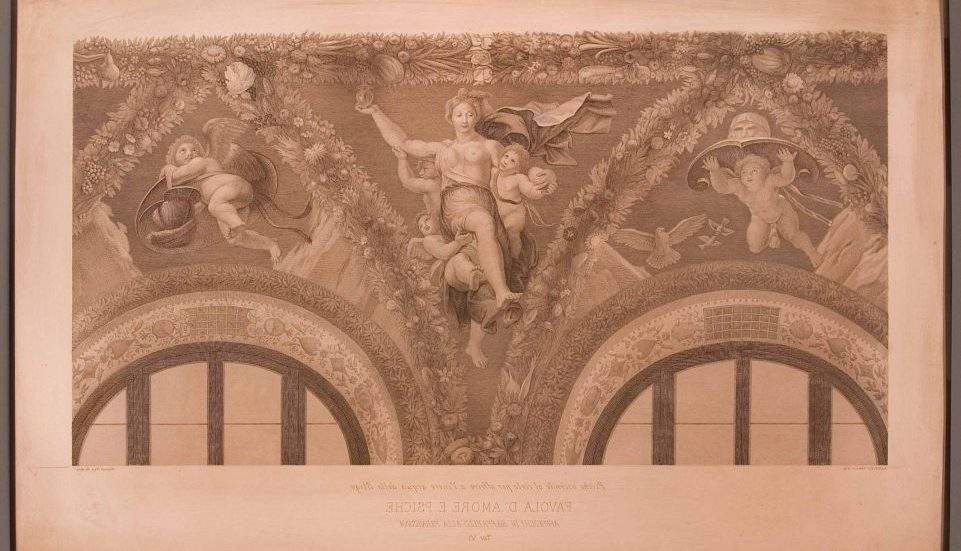Raphael's tale of Cupid and Psyche in print: an exhibition at the Villa Farnesina
Villa Farnesina alla Lungara hosts until January 6, 2021 the exhibition Raphael. The Tale of Cupid and Psyche. Photographs, Drawings, Matrices.
The exhibition aims to illustrate, on the occasion of the 500th anniversary of Raphael’s death, one of his most famous fresco cycles, that of the Fable of Cupid and Psyche in the Loggia della Farnesina, through the printed translation commissioned by the Royal Chalcography. The stages of the exhibition intend to retrace the production process of image reproduction that characterized the “mission” of the historic Roman institution for more than a century: from the original work to its transposition on the matrix, generating multiples aimed at spreading the style and iconographies of the master. This was the Calcografia’s last publishing project for the translation into print of the national heritage: from that moment, in fact, full awareness was acquired of the obsolescence of the traditional method of reproducing images, entrusted for centuries to the matrix, to give way fatally to photography. During the second half of the nineteenth century, photography and engraving had gradually entered into competition with each other with regard to the documentation of paintings, although for a long time engraving was still preferred to photography because, on the one hand, it was more faithful in the restitution of tonal ratios and, on the other hand, more reliable for the stability of images over time, and technically adequate to fit into illustrated texts. However, in this period, the use of the photographic medium is inextricably intertwined with engraving, constituting, in fact, an effective complement for the reading and full understanding of the original pictorial text. In this sense, exemplary is precisely the case of the translation of Raphael’s frescoes at the Farnesina, for the realization of which, in the years at the turn of the 19th and 20th centuries, the same Chalcography had provided for the use of photographs to support the execution of preparatory drawings for the engravings, made from life. The presence, in the Institute’s collections, of a rare and prestigious series of photographs by the Adolphe Braun Company-which at the time had distinguished itself in the panorama of professionals internationally precisely for the reproduction of pictorial and graphic works thanks to the use of the charcoal process- as well as the series of intaglio plates, alongside preparatory drawings and various other documentation materials pertaining to the entire production cycle of the printed series, constitutes the special reason and thematic focus of the exhibition that the Institute intends to present in celebration of the Master. The exhibition will also include works documenting the printed translation of the Triumph of Galatea.
The occasion also lends itself to emblematically represent and make known, even to a lay audience, the specificity of the artistic history and cultural role played by the Chalcography in the field of popularization and visual communication.
The exhibition is curated by Maria Francesca Bonetti and Giovanna Scaloni.
For all information you can visit the official website of theCentral Institute for Graphics.
 |
| Raphael's tale of Cupid and Psyche in print: an exhibition at the Villa Farnesina |
Warning: the translation into English of the original Italian article was created using automatic tools. We undertake to review all articles, but we do not guarantee the total absence of inaccuracies in the translation due to the program. You can find the original by clicking on the ITA button. If you find any mistake,please contact us.




























